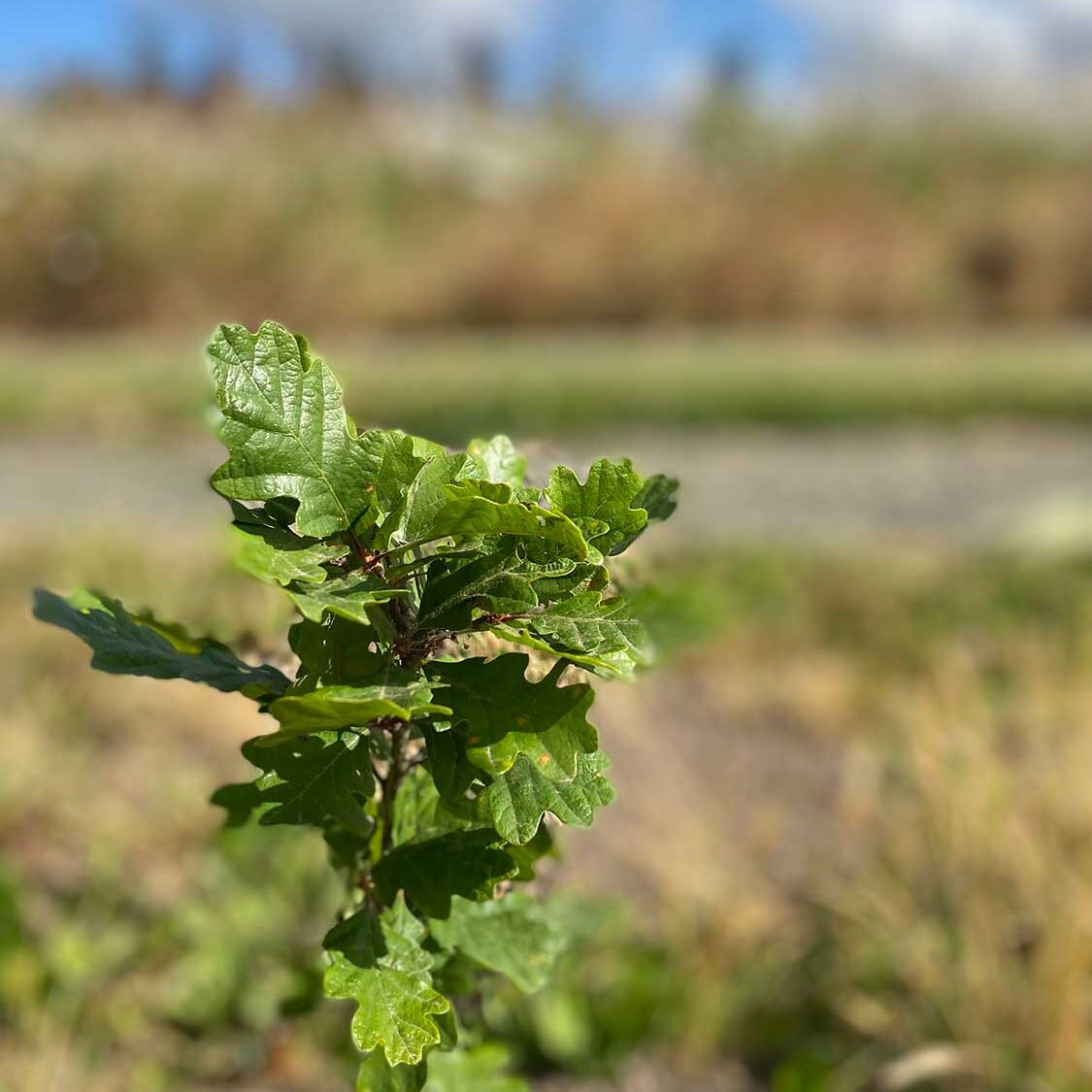Climate
Oak and prairie landscapes are drought-tolerant and fire-adapted, meaning they can withstand many of the impacts of extreme weather events.
Photo credit: USFWS Pacific Region. Nestucca NWR Prescribed fire for prairie restoration.
Commercially cultivated conifers have reduced forest biodiversity and resistance to disease. In non-commercial forests, the removal of Indigenous fire stewardship followed by fire suppression policies has dramatically increased tree density and fuel loadings, creating conditions ripe for extreme wildfire. In many locations, Douglas-fir, true firs, western red cedar, and other conifers are now stressed or dying due to the interaction of drought and increased temperatures under climate change. Many of these landscapes were formerly dominated by highly stress-tolerant oaks, often with scattered ponderosa pine and Douglas fir.
When we restore oak habitats, we reduce the density of less drought-tolerant conifers. These actions simultaneously create space for oak regrowth and reduce fuel loads to increase community durability to wildfires and drought. In turn, we protect the water supply, conserve biodiversity, support culturally important foods and medicines, and capture carbon.

Oak and prairie grasslands are also effective carbon sinks, helping to mitigate the effects of extreme weather events by absorbing and storing significant amounts of carbon.
Because grasslands dominated by perennial species such as native bunchgrasses and wildflowers often develop extensive root systems, they can store most of the carbon they capture underground.
As roots decay, they turn into soil organic matter, building stores of carbon that are much better protected from wildfire than above-ground carbon storage in trees. And unlike conifers, when oaks are top-killed they regrow rapidly, beginning to recapture carbon and recreate tree canopy in the years immediately following a fire.
